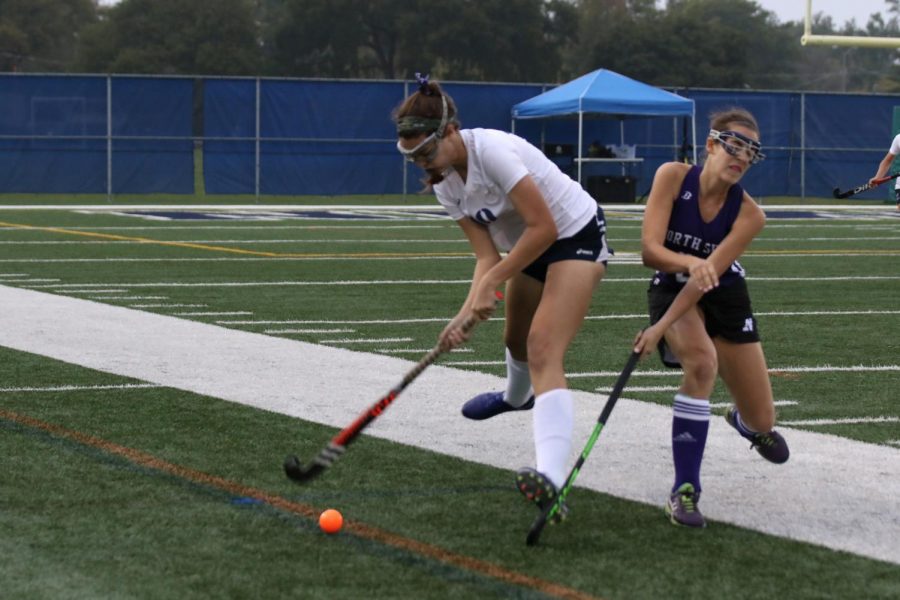Conditioning fuels Field Hockey to strong start
An intense regimen leads to 13-1 record and overtime wins
For every sport, especially at the high school level, conditioning is required to excel.
This is evident in football, with post-practice sprints in the weeks leading up to game time, and in soccer, where the clock does not stop through two grueling 45-minute halves that demand constant motion.
The team that runs the most (with the exception of cross country and track, whose sports are exclusively running) might just be the field hockey team.
While every athlete runs in the offseason, field hockey participants endure constant training in every single session of practice, seven days a week, throughout the season.
“We have a variety of runs that have been made up by our coaches or that they found somewhere else,” said senior captain Lucy Murray.
“The run that everyone always dreads is called the gauntlet – we run a mile, rest, run half a mile, rest, run a quarter mile, rest, and then we end with two 200 yard sprints and two 100-yard sprints. It’s pretty exhausting but it gets us in shape mentally and physically.”
Practice usually begins with 12-15 minutes of conditioning before anyone picks up a stick, and around 40 minutes devoted to running-based warm-up drills.
Even on game days, there is no break from this regimen, with a distance run of around a mile on the outskirts of the Northfield campus before the game begins.
“Being in shape is key,” said head coach Stephanie Nykaza. “And endurance is huge.”
Nykaza highlighted that field hockey is unique in that players are much more bent over than other athletes when they run, due to the diminutive lengths of their sticks. This would logically require more cardiovascular endurance, because when someone is gassed and gasping for air, the worst possible position to be in is with the back bent towards the ground.
Every field hockey team goes through this in some capacity, but teams like New Trier who do it the most tend to be the most dominant. Nykaza said the top teams are generally the most conditioned.
Players can sense when they have the advantage late in games because their opponent is out of breath and they are not.
“It is very noticeable when our opponents are tired out and we are still able to push ourselves and run our fastest,” said senior and fellow captain Faith Stineman.
“If we ever go into overtime with another team, we always perform extremely well because with less players on the field [as the overtime rules dictate], there is more running involved.” This showed recently in an overtime victory over Lake Forest, who is one of their fiercest rivals.
Running has been a key to building a winning mentality for New Trier. Senior and captain Julianne Ross said it best, “Not only does conditioning get us in shape for our toughest games, but it’s a huge part of our mental toughness. What’s even more important [than physical shape] is training ourselves to be resilient in the face of exhaustion.”
This formula has worked thus far, with the Trevians sitting at a 13-1 record as of the time of this writing,. The one loss came to a highly ranked team from Kentucky, but the team has high hopes for the season. “Last year, we didn’t finish where we wanted so everyone is very focused,” said junior Amy Griffin, a center midfielder.
Nykaza stated that the team is talented and has played well so far, but must stay conditioned for the long haul.
“We know that some games might not turn out how we like them, so we have to stay in shape, keep working, and keep running.”







































